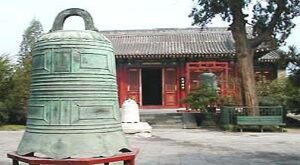As October 31 approaches, people worldwide embrace all things spooky and supernatural. But Halloween isn’t the only time or place where the dead, the unknown, and the mystical take center stage. Across centuries and continents, cultures have celebrated events that, while unique in form, share striking similarities in their reverence for the otherworldly, the cycle of life and death, and the unknown. Here’s a look at how Halloween’s eerie magic manifests globally through similar festivals—and the fascinating differences that set them apart.
Samhain – Ireland and Scotland
Celebrated Since: Over 2,000 years ago
The Celtic festival of Samhain is the grandparent of Halloween as we know it today. For the ancient Celts, Samhain marked the end of the harvest and the beginning of winter—a time when the boundary between the world of the living and the dead was believed to thin. Spirits could wander freely, and people would light bonfires and wear costumes to keep them at bay. This sacred night lives on, as many Halloween traditions, like costumes and jack-o’-lanterns, find their roots in Samhain’s ancient fires and warding customs. Today’s Halloween, however, has a more playful approach compared to Samhain’s solemn reverence for the dead.
All Saints’ Day and All Souls’ Day – Europe
Celebrated Since: 8th century
When Christianity spread through Europe, it absorbed some of Samhain’s influence by establishing All Saints’ Day on November 1 and All Souls’ Day on November 2. These days honored saints and departed souls, and people would offer food, light candles, and pray to guide souls safely to the afterlife. In medieval Europe, villagers went door to door praying for the dead in exchange for “soul cakes”—a precursor to trick-or-treating! Unlike Halloween, however, All Saints’ and All Souls’ Days still retain a solemn and religious focus, emphasizing prayer and remembrance rather than frights and festivities.
Dia de los Muertos – Mexico and Latin America
Celebrated Since: Over 3,000 years ago, adapted in the 16th century
In Mexico and parts of Latin America, Dia de los Muertos (Day of the Dead) is a vibrant celebration that welcomes deceased loved ones back to the world of the living. Originating from Aztec traditions, it was later adapted by Spanish colonists to coincide with Catholic All Saints’ and All Souls’ Days. Families decorate altars with marigolds, sugar skulls, and photos, preparing favorite foods for returning spirits. Unlike Halloween, which has morphed into a night of spooky revelry, Dia de los Muertos is joyful—a reunion of family members, living and deceased, brought together to celebrate life, memories, and love.
Obon Festival – Japan
Celebrated Since: 7th century
Japan’s Obon Festival, a midsummer celebration of ancestors, invites spirits of the dead to visit their families. Known for its hauntingly beautiful lanterns that guide spirits back home, the festival also includes Bon Odori, traditional dances performed to honor the spirits. Though Obon shares Halloween’s theme of ancestral visitation, it’s a time of family unity and quiet respect rather than spooks or costumes. Lighting candles to guide spirits is perhaps its most significant similarity to Halloween—but here, the lights welcome, not ward off.
Pchum Ben – Cambodia
Celebrated Since: Ancient times, influenced by Khmer Buddhism
For 15 days each September or October, Cambodians celebrate Pchum Ben to honor their ancestors and appease wandering spirits. Cambodians bring offerings to temples and light candles to guide spirits safely, hoping to bring peace and protect loved ones from restless souls. Like Halloween’s origins, Pchum Ben is rooted in beliefs about the afterlife and the thin veil between the living and dead. But here, the focus is less on mystery and more on familial connection, forgiveness, and tradition.
Fête de la Toussaint – France
Celebrated Since: 8th century
In France, November 1 is marked as Fête de la Toussaint, or All Saints’ Day, a solemn day when families visit cemeteries, place chrysanthemums on graves, and hold family gatherings to remember deceased loved ones. While it shares Halloween’s emphasis on remembering the dead, Fête de la Toussaint is a quiet and reflective holiday without costumes, candy, or spooky festivities. It highlights the differences between Halloween’s embrace of the supernatural and Toussaint’s respectful, religious remembrance.
Hungry Ghost Festival – China
Celebrated Since: 200 BCE
In China, the Hungry Ghost Festival is a haunting celebration that takes place during the seventh lunar month, typically in August. It’s believed that spirits roam the earth during this time, and to prevent any harm, people burn offerings and leave out food to appease them. Like Halloween, there’s an atmosphere of fear around these spirits, and people take measures to avoid upsetting them. The Hungry Ghost Festival, however, is seen as much more solemn and dangerous than Halloween, where spirits are respected—and even feared.
Guy Fawkes Night – United Kingdom
Celebrated Since: 1605
Although it has no connection to the supernatural, Guy Fawkes Night on November 5 still brings people together around bonfires. The night commemorates the failed Gunpowder Plot of 1605, when Guy Fawkes attempted to blow up the British Parliament. Today, Brits light bonfires, set off fireworks, and burn effigies of Fawkes, creating an atmosphere reminiscent of Halloween’s fires and festivities. Unlike Halloween’s eerie roots, however, Guy Fawkes Night is politically charged rather than spiritually focused.
St. Martin’s Day – Central Europe
Celebrated Since: 4th century
Celebrated in Austria, Germany, and Switzerland, St. Martin’s Day on November 11 honors the Christian saint and focuses on charity and kindness. Children carry lanterns and go door-to-door singing songs in exchange for sweets, echoing Halloween’s trick-or-treating tradition. St. Martin’s Day, however, is more about generosity and community than spirits or the supernatural.
A Shared Tradition of Honoring the Unknown
From Samhain to Dia de los Muertos, these traditions each explore humanity’s complex relationship with death, spirits, and the supernatural. Halloween stands out for its playful mix of costumes, candy, and fright, taking on a more commercialized, less reverent tone than some of its global counterparts. And yet, each of these traditions, whether it’s setting out food for spirits in China or welcoming ancestors in Japan, reflects an ancient and powerful curiosity about what lies beyond the veil.
This Halloween, while you carve pumpkins or hand out candy, take a moment to consider its global connections and the diverse, hauntingly beautiful ways that cultures across the world honor the mysteries of life, death, and everything in between.



